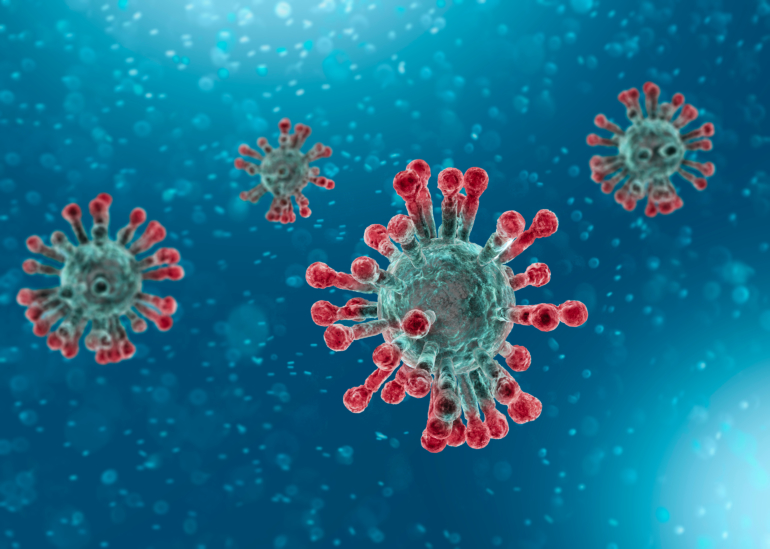Publication
Apr 6, 2020
New CDC Face Mask Guidance Raises Liability Issues
Sign up for our Coronavirus roundup email.
Visit our Coronavirus resource page.
I. Introduction
The Centers for Disease Control and Prevention (CDC) and Federal Occupational Safety and Health Administration (OSHA) have issued guidance documents to help employers minimize hazards of Coronavirus / COVID-19 exposures in the workplace. From the outset of the COVID-19 pandemic, the agencies recommended that employers conduct a hazard assessment and implement protective measures, including enhanced Personal Protective Equipment (PPE), where appropriate. During the initial weeks of the epidemic, the agencies recommended respiratory protection only for health care workers, as widespread shortages limited the supply of filtering face-piece respirators (e.g. N95 respirators) and surgical masks. Late in the week of March 30, 2020, the CDC revised its recommendations to encourage the public use of face masks. These new recommendations for PPE come as widespread shortages of PPE in health care persist, with numerous media reports of health care providers revising long-standing procedures to reuse face masks and respirators with multiple patients and over longer periods.
II. New CDC Recommendations
The CDC has learned that asymptomatic and pre-symptomatic individuals can be highly contagious and spread the disease when “interacting in close proximity—for example, speaking, coughing, or sneezing—even if those people are not exhibiting symptoms.”[1] Face coverings may capture droplets and minimize some exposures to the virus.[2] Accordingly, the CDC “advises the use of simple cloth face coverings to slow the spread of the virus and help people who may have the virus and do not know it from transmitting it to others.”[3] Further, the CDC “recommends wearing cloth face coverings in public settings where other social distancing measures are difficult to maintain (e.g., grocery stores and pharmacies) especially in areas of significant community-based transmission.” These “cloth coverings” are not surgical masks or filtering face-piece respirators which are “critical supplies” that the CDC recommends be limited to use by health care workers. The CDC also offers advice for creating face masks from t-shirts (or coffee filters), cleaning cloth coverings in the washing machine, and properly removing cloth coverings from the face (avoiding touching the eyes or mouth, and immediately washing hands after removal).
III. Employer Safety Challenges from Face Masks
Under the Occupational Safety and Health Act, employers have a general duty to provide a workplace free from recognized hazards likely to cause serious physical harm or death. As we have consistently recommended, employers can help ensure compliance with their legal duties regarding COVID-19 by carefully tracking the CDC recommendations, communicating hazards and agency recommendations to employees, and training employees on safety measures such as including PPE.
Several jurisdictions are now recommending or mandating that individuals wear face masks when in public; we anticipate the number of local and state mandates will increase. Many employers have been providing commercially available face masks for employee use, either mandating them or permitting them on a voluntary basis. Some employers are now considering permitting homemade employee face masks, such as close-fitting cloth face masks and bandanas. Voluntary face masks, particularly when homemade, may create safety hazards that employers must address:
1. Obstructed vision: employees may use face masks that obstruct their vision or “steam up” their safety glasses / glasses. This may impact employees’ ability to perform safety-sensitive tasks.
> Employers should train employees on this risks of improperly fitting face mask and “steam” or condensation on glasses. If an employee is unable to resolve vision obstructions for forklift or heavy equipment operation (for instance), the face masks may create a greater hazard and should not be used.
2. Caught-in / entanglement hazards: face masks and bandanas could be caught in machinery and seriously injure employees. Many employers prohibit jewelry, hooded sweatshirts, or long hair for the same reason.
> Employers whose workplaces present caught-in / entanglement hazards should consult with a safety professional who can advise on whether face masks or bandanas should be permissible in the worksite. Caught-in hazards may present a greater hazard to employees and should not be used.
3. Disease vector / respiratory hazards: face masks may accumulate COVID-19 viruses and other pathogens. If they become wet with saliva or sweat, face masks may become a growth environment for bacteria and other pathogens. Face masks can further accumulate nuisance dust, silica, or other respirable health hazards that exist in the workplace.
> Employers should train employees to safely remove face masks, without touching their eyes, nose or mouth, and wash their hands and face before touching their face.
> Employers should develop protocols for replacement or cleaning of company-provided face masks.
> Employers should train employees on how to safely maintain face masks whether or not issued by the employers, including proper handling with clean hands and proper storage. Safety professionals have recommended the use of a paper bag for storage, to wick moisture and not plastic bags which would retain moisture and create an environment to propagate infectious material.
4. Asphyxiation hazards: tight, homemade face masks made of impermeable materials or face masks covered with saliva or mucous may excessively limit an employee’s breathing. This can cause rebreathing of carbon dioxide or other infectious material. Employees with underlying respiratory or cardiac health conditions may be particularly susceptible to this hazard. A restriction of breathing of fresh air can also create an asphyxiation hazard.
> Employers should train employees on the exclusive use of employer-provided masks, or alternatively the proper construction of homemade masks. The CDC recommends relatively permeable t-shirt fabric or coffee filter construction.
> Employers should train employees on proper fitting and maintenance of face masks, including replacement if they become saturated from exhalation.
5. False sense of security: employees may presume that they cannot spread or contract coronavirus on account of a face mask.
> Employers should train employees that the better method to prevent transmission is social distancing, and that face masks serve as an imperfect supplemental protection.
> Employers may also wish to confirm to employees that these devices are not respirators and may not prevent infection.
IV. ADA Liabilities
Employees with compromised immune systems and respiratory conditions may be at particularized risk from community transmission of COVID-19. In workplaces that have not permitted voluntary use of face masks, these employees may request to use face masks as a reasonable accommodation. Employers will be required to engage in a robust interactive process and come to a determination as to whether a face mask is a reasonable accommodation or cannot be allowed, for example, if the face mask presents a direct threat due to the health of that employee or an entanglement hazard.
V. Whistleblower / Retaliation Liabilities
Employees may bring claims for retaliation under Section 11(c) of the Occupational Safety and Health Act. To state a prima facie case for OSHA retaliation, an employee must establish (1) a protected activity, such as making internal safety complaints, complaining to OSHA, or refusing to perform unsafe tasks, (2) an adverse employment action, and (3) causal connection between the two. The Act gives employees the right to file a whistleblower claim with OSHA within 30 days of the adverse employment action. The agency will then conduct an investigation of the claim; there is no private cause of action under the Act. As to protected activity, employees may complain if they are not permitted to wear face masks, or may refuse to perform functions where they work in close contact with others without face masks. Employees generally do not have the right to walk off the job or refuse to attend work entirely on account of a safety concern once the employer demonstrates that it has a program to protect the employee against the hazard. The employee may only refuse to perform specific tasks for which the employee has an objectively reasonable safety concern that the employer has not yet addressed. Accordingly, employers implementing face mask policies must be aware of these potential retaliation issues.
VI. Food Safety Compliance Issues
Workplaces involved in food processing and manufacturing may face additional liability issues relating to face masks. For example, certain regulations from federal and state regulatory agencies (e.g. USDA and FDA) may restrict the PPE that can be worn by employees, prohibiting any articles of clothing not approved by the agency, which could include face masks, especially homemade masks.
VII. Limited Utility of Waiver / Disclaimers
As stated above, we recommend training employees on COVID-19 hazards and providing appropriate training relating to face mask policies. Employers can demonstrate the effectiveness of training by preparing documentation of the training sessions and employee sign-offs. Some employers have asked employees to sign waivers, intending to limit employer liability for face mask use. A waiver may be of limited legal value for workers’ compensation purposes, because employees generally cannot waive their rights to file workers’ compensation claims based on injuries or illnesses arising in the course of employment.
VIII. Do’s and Don’ts of Face Mask Use
Accordingly, employers should closely consider the hazards at their workplaces and assess the best options for face masks, consisting with changing CDC guidance. We have included a Do’s and Don’ts handout to help guide employers. For more information on face masks or any COVID-19 safety topic, please feel free to contact Mark A. Lies, II at mlies@seyfarth.com or Adam R. Young at ayoung@seyfarth.com
[1] https://www.cdc.gov/coronavirus/2019-ncov/prevent-getting-sick/cloth-face-cover.html. In reaching its recommendations, the CDC cited numerous scientific studies on asymptomatic and pre-symptomatic infections.
[2] https://www.theguardian.com/world/2020/apr/05/face-mask-protect-coronavirus-covid-19-myths-busted
[3] https://www.cdc.gov/coronavirus/2019-ncov/prevent-getting-sick/diy-cloth-face-coverings.html


